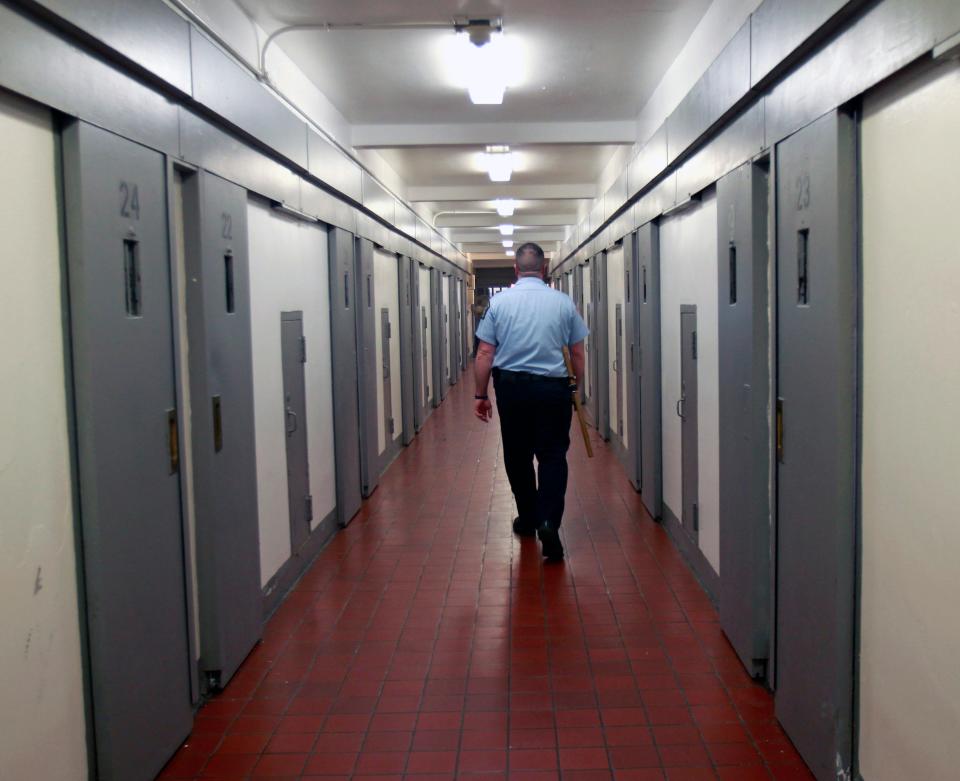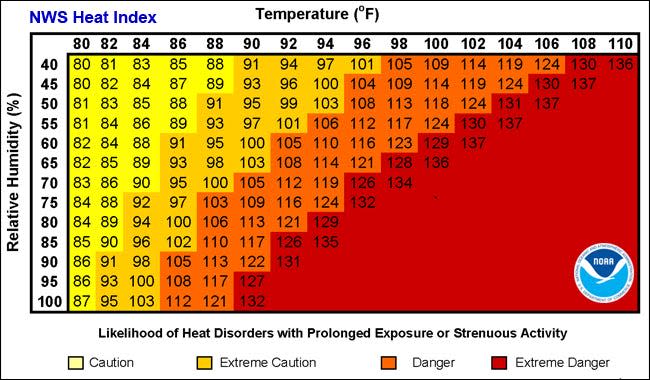Dangerous summer heat puts people in NY prison at risk, report says. What are its findings?
Note: This story was updated to provide correct calculations of heat indices for July 20 and 21 at the Coxsackie Correctional Facility.
People incarcerated at a Hudson Valley prison last year complained about dangerous summer temperatures with little respite inside cells, a state monitor said.
Between July 20 and 21, Coxsackie Correctional Facility, a men's prison located about 25 miles south of Albany, experienced temperatures above 90 degrees with high humidity. Nearby weather readings categorized the heat index at the time — or how hot it felt — as "extreme caution," based on National Weather Service thresholds.
During that time, nearly 100 people incarcerated spoke with the Correctional Association of New York (CANY), a nonprofit with oversight authority under state law to monitor prisons.
This month, CANY issued its report on the two-day visit to Coxsackie, finding that incarcerated individuals were locked in cells with no cross ventilation in humid conditions, according to their firsthand accounts.
The Department of Corrections and Community Supervision (DOCCS), the state agency responsible for the state’s prison system, said Coxsackie's temperatures are “appropriate to the summer and winter comfort zones.”
“The way DOCCS responds is that they literally say the temperatures are appropriate. We’re telling you that they’re not,” Jennifer Scaife, CANY’s executive director who conducted interviews at Coxsackie, told the USA TODAY Network New York. “It's this 'emperor has no clothes' kind of moment."
Extreme heat has been an issue in state prisons that often have aging infrastructure, as USA TODAY Network has reported, based on interviews with currently and formerly incarcerated people. Observers say temperatures will worsen with the effects of climate change.
Along with the report at Coxsackie, built in 1935, recent CANY findings at Albion, Sing Sing and Great Meadow have cited sweltering prison conditions across the state.
“The Department takes seriously the impact of climate change and extreme weather events across the state, and understands the importance of proactive measures to ensure the safety of both staff and incarcerated individuals, as well as the community at large,” Rachel Connors, a DOCCS spokesperson, said in email responses.
Dangerous conditions: As summers get hotter, incarcerated people swelter inside NY prisons
'It's like an oven'
Monitors surveying Coxsackie's conditions spoke with people sweating just standing inside their cells, Scaife recalled. A correctional officer inquired about getting air conditioning and ice machines for the facility because of inhospitable working conditions, the CANY report found.
“It is like an oven,” one person described. Some said the heat worsened their health conditions. Others added it contributed to people being agitated.
Scaife added cells appeared to have radiator units, for heat, but no ducts to ventilate or replace air.

Extreme temperatures were more acute in the solitary housing unit than in other units, the CANY report said.
Monitors conducted close to 100 interviews, out of a total prison population of nearly 600 people as of July. In 61 responses, 48 people, nearly 79%, said Coxsackie wasn’t adequately cool inside during the summer.
In its responses included in the CANY report, DOCCS said it complies with standards set by the American Correctional Association, an industry trade group, for temperature and ventilation, which Coxsackie regularly meets.
DOCCS cited its alert and notification system when excessive heat warnings or advisories are issued. On those occasions, the agency requires prison staff to:
Identify people in their facilities who may be more susceptible to heat-related illnesses;
look for signs and symptoms of heat illnesses;
evaluate if outdoor assignments are needed.
Additionally, watch commanders are supposed to monitor and update people at line-ups for 72 hours following the alerts.
Urban renewal vestiges: As NY town grew, Black residents wondered what they were breathing. Air quality data offers clues
Scorching nearby heat index
On July 19, a day before CANY monitors visited Coxsackie, DOCCS’ chief medical officer, Dr. Carol A. Moores, and Deputy Commissioner Joseph H. Noeth warned prison superintendents across the state of “potentially dangerous heat conditions” for nearly a week.
“Prolonged exposure to the heat can be harmful and potentially fatal,” they wrote in a memo, urging staff to look out for nausea, vomiting, muscle cramps and other symptoms indicative of heat illness.

Between July 20 and 21, 2022, temperatures reached above 90 degrees about 10 miles from Coxsackie, across the Hudson River, at Kinderhook, part of the New York State Mesonet’s statewide weather system, which is affiliated with the University at Albany. July 20th topped at 91.3 degrees, though with humidity, the heat index was calculated at 98 degrees, researchers said. The next day reached 91.6 degrees, with a heat index of 101 degrees when combined with humidity.
At those levels, the National Weather Service considers heat strokes, cramps or exhaustion "possible with prolonged exposure and/or physical activity."
What are solutions to extreme heat in prisons?
CANY called for the department of corrections to create an annual heat mitigation plan for incarcerated people and staff to stay cool and hydrated.
Recommendations included:
Access to industrial fans;
fully stocking personal fans in commissary prior to the start of summer;
providing water (which some respondents in prison said wasn't clean to drink), ice and additional showers;
monitoring temperatures in the prison;
increasing wellness checks for incarcerated individuals;
providing additional shade in exercise yards.
DOCCS previously said most state prisons aren’t air conditioned but have fans. Some prisons' medical units provide A/C, including Coxsackie’s Regional Medical Unit.
In July, the state Department of Environmental Conservation’s Extreme Heat Action Plan Work Group, which includes DOCCS and more than 70 state agencies, issued interim recommendations, but they made little mention of prisons aside from heat alerts. The environmental conservation department deferred questions to DOCCS.
The work group plans to issue further recommendations in the coming months, Connors, of DOCCS, said.
Along with extreme heat, people incarcerated at Coxsackie complained about issues obtaining items from the commissary, staffing shortages, abusive staff and a general overuse of discipline.
Eduardo Cuevas covers race and justice for the USA TODAY Network of New York. He can be reached at EMCuevas1@gannett.com and followed on Twitter @eduardomcuevas.
This article originally appeared on New York State Team: People at Coxsackie Correctional threatened by extreme heat, CANY says

